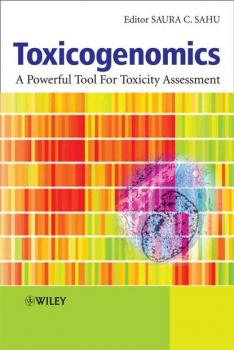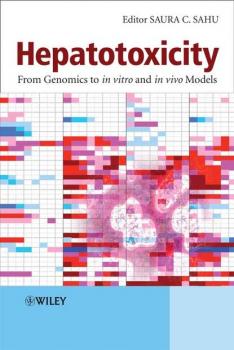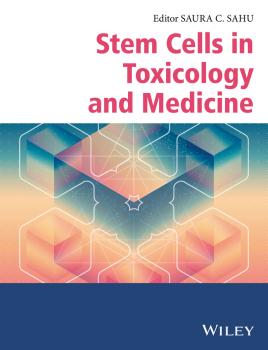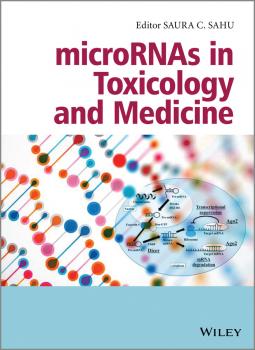ТОП просматриваемых книг сайта:
Saura Sahu C.
Список книг автора Saura Sahu C.Аннотация
Nanomaterials – substances smaller than 100 nanometers in size – have been added in recent years to an increasing numbers of consumer products used in day-to-day life; in food packaging, medical devices, pharmaceuticals, cosmetics, odor-resistant textiles and household appliances. The extensive application of nanomaterials in a wide range of products for human use poses a potential for toxicity risk to human health and the environment. Such adverse effects of nanomaterials on human health have triggered the development of a new scientific discipline known as “nanotoxicity” – the study of the toxicity of nanomaterials. Nanotoxicity: From in vivo and in vitro Models to Health Risks provides up-to-date state-of-the-art information presented by recognized experts in this emerging new field in toxicology. It discusses the safety evaluation of nanomaterials in foods, drugs, medical devices, cosmetics and other regulated products and its use in risk analysis for potential regulatory use. Topics covered include: biomarkers for nanotoxicity assessment nanotoxicity assessment by gene expression analysis in vivo and in vitro models for nanotoxicity testing mechanisms of nanotoxicity pharmakokinetics of nanomaterials nanotoxicity of foods including food processing, food packaging and food safety nanotoxicity of drugs including drug development and drug delivery nanotoxicity of cosmetics and consumer products health and environmental impact of nanotoxicity safety evaluation of nanomaterials regulatory impact of nanomaterials Nanotoxicity: From in vivo and in vitro Models to Health Risks is a valuable authoritative source of information for readers from a wide range of disciplines such as toxicology, pharmacology, drug toxicity and food and environmental sciences. The book will be useful to the research community in academia, industry, hospitals and government, as well as to government regulators and risk assessors of foods, drugs and environmental and agricultural products.
Аннотация
Toxicogenomics is the integration of genomics to toxicology. This technology is a powerful tool for collecting information from a large number of biological samples simultaneously and thus it is very useful for large-scale screening of potential toxicants. Toxicogenomics: A Powerful Tool For Toxicity Assessment provides up-to-date state-of-the-art information presented by the recognized experts, and is therefore an authoritative source of current knowledge in this field of research. The potential link between toxicology, genetics and human diseases makes this book very useful to investigators in many and varied disciplines of science and toxicology. Topics covered include: mechanistic toxicogenomics analysis and interpretation of toxicogenomic data principles of data mining in toxicogenomics design issues in toxicogenomics studies sources of variability in toxicogenomic assays Escherichia coli stress response as a tool for detection of toxicity toxicogenomics as a tool to assess immunotoxicity toxicogenomics and ecogenomics for studying endocrine disruption and basic biology use of toxicogenomics as an early predictive tool for hepatotoxicity nutrigenomics: the application of genomic signatures in nutrition-related research application of toxicogenomics in drug discovery potential uses of toxicogenomic biomarkers in occupational health and risk assessment usefulness of toxicogenomics in the regulatory environment perspectives on toxicogenomics at the US Environmental Protection Agency Toxicogenomics: A Powerful Tool For Toxicity Assessment is an essential resource for research scientists currently engaged in toxicogenomics, and will also be of interest to researchers working in toxicology, genetics, medicine, pharmacology, and food sciences, and to regulators and risk assessors of drug, food, environmental and agricultural products.
Аннотация
This book addresses all the current, up-to-date developments in this scientific discipline. Liver is the chief metabolizing site in the body, and thus, it is a major target organ for drug and chemical toxicity. Therefore, hepatotoxicity is an important endpoint in the safety evaluation of drugs and chemicals. Contributions from leading investigators in hepatotoxicity research address current developments in this scientific discipline and discuss use of current cutting edge technology such as microarrays in hepatotoxicity thus providing a better understanding of hepatotoxins, their interactions and mechanisms of action. This valuable authoritative source of information is the first book to address this topic for nearly ten years, making it an essential resource for readers from a wide range of disciplines such as toxicology, pharmacology, hepatology, drug toxicity and food science.
Аннотация
A comprehensive and authoritative compilation of up-to-date developments in stem cell research and its use in toxicology and medicine Presented by internationally recognized investigators in this exciting field of scientific research Provides an insight into the current trends and future directions of research in this rapidly developing new field A valuable and excellent source of authoritative and up-to-date information for researchers, toxicologists, drug industry, risk assessors and regulators in academia, industry and government
Аннотация
During the past decade it has become evident that microRNAs regulate gene expressions and control many developmental and cellular processes in eukaryotic organisms. Recent studies suggest that microRNAs play an important role in toxicogenomics and are likely to play an important role in a range of human diseases including cancer. microRNAs in Toxicology and Medicine is a comprehensive and authoritative compilation of up-to-date developments in this emerging research area, presented by internationally recognized investigators. It focuses on the role of microRNA in biology and medicine with a special emphasis on toxicology. Divided into six parts, topics covered include: microRNA and toxicology – including environmental toxicants and perturbation of miRNA signaling; microRNA, and Disease States featuring microRNAs in drug-induced liver toxicity, microRNAs and Inflammation the regulatory role of microRNA in mutagenesis, microRNAs and cancer, and the role of microRNAs in tumor progression and therapy, as well as current understanding of microRNAs as therapeutic targets in cancer microRNAs and disease states microRNAs and stem cells microRNAs and genomics microRNAs and epigenomics microRNAs and biomarkers – including body fluid microRNAs as toxicological biomarkers, cell-free microRNAs as biomarkers in human diseases, and circulating microRNAs as biomarkers of drug-induced pancreatitis microRNAs in Toxicology and Medicine is an essential insight into the current trends and future directions of research in this rapidly expanding field for investigators, toxicologists, risk assessors, and regulators in academia, medical settings, industry, and government.
Аннотация
Epigenetics is the study of both heritable and non-heritable changes in the regulation of gene activity and expression that occur without an alteration in the DNA sequence. This dynamic and rapidly developing discipline is making its impact across the biomedical sciences, in particular in toxicology where epigenetic differences can mean that different individuals respond differently to the same drug or chemical. Toxicology and Epigenetics reflects the multidimensional character of this emerging area of toxicology, describing cutting-edge molecular technologies to unravel epigenetic changes, the use of in vivo and in vitro models, as well as the potential use of toxicological epigenetics in regulatory environments. An international team of experts consider the interplay between epigenetics and toxicology in a number of areas, including environmental, nutritional, pharmacological, and computational toxicology, nanomaterials, proteomics and metabolomics, and cancer research. Topics covered include: environment, epigenetics and diseases DNA methylation and toxicogenomics chromatin at the intersection of disease and therapy epigenomic actions of environmental arsenicals environment, epigenetics and cardiovascular health toxicology, epigenetics and autoimmunity ocular epigenomics: potential sites of environmental impact in development and disease nuclear RNA silencing and related phenomena in animals epigenomics – impact for drug safety sciences methods of global epigenomic profiling transcriptomics: applications in epigenetic toxicology Toxicology and Epigenetics is an essential insight into the current trends and future directions of research in this rapidly expanding field for investigators, toxicologists, risk assessors and regulators in academia, industry and government.






